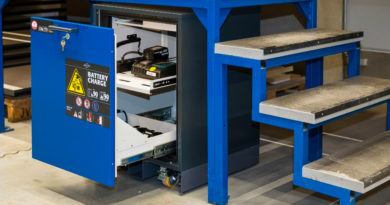The Brexit effect and the UK cycling industry
In this feature we hear from Klaus Berchtenbreiter, who shares insight and experience gained working for a business which looked to enter the UK marketplace as a Germany based business. The feature focuses on exploring operational complexities, costs, and potential opportunities that have arisen as a result of Brexit. Over to you Klaus…
 Thanks, Simon. I’ll start by saying that more than 20 years ago I moved to the UK with my now wife. Freedom of movement, guaranteed by EU law, meant this was, as a German national, relatively straightforward. With a background in economics and accounting I pursued a career in finance. When the opportunity to combine my passion for cycling with work arose, I happily went to work in the cycling industry.
Thanks, Simon. I’ll start by saying that more than 20 years ago I moved to the UK with my now wife. Freedom of movement, guaranteed by EU law, meant this was, as a German national, relatively straightforward. With a background in economics and accounting I pursued a career in finance. When the opportunity to combine my passion for cycling with work arose, I happily went to work in the cycling industry.
Fast forward to 2021 and I found myself working for a British brand, licensed to a German business, with no presence in the UK market it was seeking to re-enter. All did not go as planned. Two years later, after much effort and investment, the business made the decision to leave the UK market.
Much like peeling back the layers of an onion, the process of examining why a business didn’t succeed is an emotional journey. Good news: There are things you can do to bring a smile back to your face, if you do it right. All the ingredients are there.
Here I aim to share insights from this experience, to help other businesses who’ll undoubtedly face similar challenges in the coming years. Drawing on my professional experience, here we explore how post Brexit Britain has become a challenge for international businesses, and domestic businesses, importing products for sale in the UK.
Brexit: How does (can) that work for you?
Let’s start with the natural questions, as a means to explore what we can learn:
- How did this become so difficult?
- Why was it so hard to achieve success?
- Was the outcome a result of our mistakes?
Through my research, I established strong links between legislative changes, the need for businesses to adapt, and mistakes made in the past.
What’s needed to trade in the UK, post Brexit?
Trading on British soil requires establishing a UK entity to comply with UK trading laws, as the UK is no longer part of the EU free trade zone. You will need a separate ledger, you will need to do a separate VAT return, and apply for a UK VAT number, plus you will need to consolidate your accounts.
Yes, you guessed it right – extra costs.
Now that this is sorted, you’ll need to get stock into the UK to trade. As an addition to the warehousing space you already have on the continent, you’ll need to hire more in the UK, if you’re to be cost effective and compete with the next day delivery that is expected by consumers. You move the goods. “We’ll have to pay for the transport anyway”, I hear you say. You’re right, but now it’s more complicated. You must declare the goods for custom clearance, pay duties, VAT on entering the UK market, and it takes longer to get the paperwork in order and the transfer is longer to.
So, the result – extra costs.
Taking a different approach
You engage a third party. You decide to partner up and find a distributor, or contract someone to act as your importer of records. No big deal, but are they doing this for free? Of course not. Therefore, another piece of the cake gets taken by someone else, but you still bear most of the risk.
The result – increased costs.
Is your business ready for 2024?
According to UK trading laws, CE certification will be replaced by CA UK certification by 2024 adding another layer to the Brexit-Onion.
It might just sound like one more little thing, but this requires the testing to be carried out in accordance to fulfil the newly established standard. The test is very similar to the established CE testing, however it requires an additional certificate.
Yes, you guessed correctly – it adds extra cost.
Cost to service the UK market through a network of cycling retailers
A UK dealer’s margins are lower than for the same retail store’s in mainland Europe.
On the surface, this looks positive for manufacturers and distributors, however, the extra costs we outlined above result in a lower margin than you – the manufacturer / brand – can achieve in the EU.
Some European manufacturers have left the UK market because of these factors.
Is this all bad?
In a market that hasn’t shrunk in size, there is greater opportunity to gain market share, as there are fewer players. Therefore, the answer is probably no, it is not all bad. For anyone wishing to enter the UK market, post Brexit, the outlook can still be good if they consider all the factors outlined here, and adapt their retail offerings to find efficiency savings and alternative delivery models.
Alternative delivery models explored
Working as a stand-alone, distant selling has proven challenging, and the huge entry cost of reaching end consumers is a barrier. There is a very real possibility that the already high marketing cost could easily spiral and simply outstrip any potential for profit.
Consumers want to try bikes before they buy them. The need to have someone ‘nearby’ who can handle the ever-increasing demands of more technical bikes, particularly with eBikes, is critical. As just one example, considering D2C VanMoof, repeatedly reporting huge losses due to warranty issues and missing service partners. The Challenge is real. D2C is not a one size fits all panacea.
Is there a simple model out there?
Probably not, but there are opportunities to be explored.
There is something in common between struggling high street retailers and bicycle dealers across the UK. Cash is tight for them. As a result of having to take in big orders in advance, store them, and bear the costs of marketing and selling their business, this is more costly and ineffective than it could be. There are bicycle repair shops located in prominent locations, but their retail potential is limited by a lack of investment ability.
Also, ‘shop-in-shop’ concepts offer great potential due to shared overhead costs, staffing costs, and an existing customer base to leverage. Engaging retailers with new brands without having to make a cash commitment up front, and allowing for long-term collaboration and growth. Developing a flourishing business outlook with rapid growth potential at manageable costs.
Another option is ‘retail as a service’, where a retailer rents out space in his premises, offers the service of sales as well as the option to service the bike after the sale. The retailer has no cash commitment, but does have a steady income from rent and future prospects. As a result, the manufacturer has far fewer costs than running his own store. Additionally, they have a presence in the market and a face to represent the brand, enabling them to deliver all the things that the internet cannot.
Using the potential of both retailers and manufacturers, new business models could emerge, if they are working together. With the local bicycle retailer being a partner and your brand’s face, distant selling becomes local again. With a drop shipment option, your retailer will be able to deliver your bikes with little waiting time and a much-reduced inventory holding cost, increasing their profitability and efficiency.
To conclude, there are opportunities out there, but the industry must be willing to rise to the challenge and open them up.
If reading this has raised Brexit related questions about your own business, and you’re keen to discuss points raised, Klaus Berchtenbreiter can be contacted via LinkedIn



